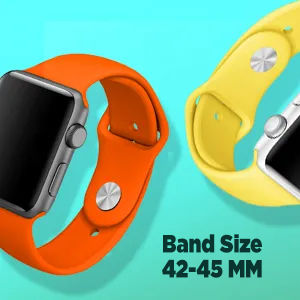What Is The Latest Solution To Screen Protection?

When you first get a new smartphone or tablet, you probably handle it with intense caution. You're just not going to let anybody else keep it and you're scared they'll lose it.
You want to secure your money as much as possible because the new and best technology is as costly as it is breakable. However, we often avoid handling our devices in this fashion over time. They become so entrenched in our lives that we lose them, knock them against the wall, and chuck them into our purses and backpacks carelessly. Fortunately, a screen protector will secure all of your computers in a simple and comfortable manner.
Those pesky scratches on your mobile screen seem to appear out of nowhere! Cracks from dropping the phone will surface in addition to scratched displays.
Screen protectors have been shown to work, so investing in one to protect your handset is a must. Read this post if you're trying to understand as to what the latest solution to effective screen protection is.
Advantages of Screen Protectors in Today’s World
• Scratches will happen even though you use your smartphone carefully. Between the screen and the phone shell, sand grains can fall. The use of a protective film lowers the risk of screen degradation and avoids the forming of chips and scuffs.
• Reduction of fingerprints.
• Matte video, for example, does not collect fingerprints.
• It also prevents fingers from slipping over the frame. When typing, this is a benefit.
• There is no glare. Glare is minimized by using a matte screen protector.
Did you know Liquid Screen Protectors have started to replace the old tempered glass!?
Yes, you read it right! So, sit tight because now you are going to understand what exactly a Liquid Screen Protector is and why is it better!
So, What’s a Liquid Screen Protector All About?
Screen protectors that are liquid glass are known as liquid screen protectors. Silicone Dioxide is the base compound used in any liquid screen protector. Since the oleophobic coating and anti-bacterial properties of SiO2 are automatically given by the liquid screen protector as it dries.
So, Why a Liquid Screen Protector?
Liquid glass is a transparent substance that can be rubbed onto your smartphone or tablet. It's a nano-liquid that alters the chemical composition on the screen as it dries. When you apply it, it cures the glass on your screen, making it more resistant to cracks and fractures. Your glass screen may appear to be a smooth surface at first glance but examining it under a microscope reveals multiple holes and openings.
On a microscopic basis, the glass on your smartphone turns rough with time. A modern smartphone has a coating that deteriorates with time. The majority of coatings are only good for a few months. Liquid glass smooths out the rough patches that surface on your mobile screen when you use it. It's just 100 nanometers thick, so it won't do much to the thickness of your unit.
If you look at your screen under a microscope, you'll see tiny pores that eventually lead to a break. When you add a liquid screen protector to your screen, it covers the pores and heals it, making it more resistant to falls and shocks.
Some Features of Liquid Screen Protectors.
- • Using Nano Technology, a Liquid Screen Protector is developed.
- • Resistant to Impact and Shatter
- • 9H Scratch Resistant approved
- • Totally imperceptible
- • Bubble-free with high-definition clarity
- • It can be seen on any glass-based computer.
- • Highly simple to use.
Disadvantages of Old Screen Protectors/Scratch Guards/Tempered Glass.
- • If you use matte glass, it can wear out sooner than if you use a shiny protection. You'll have to repair it regularly.
- • When reading, for example, matte film will make the picture scaly, which can be visible.
- • Some touchscreens have been known to be incompatible with screen protectors.
- • A touchscreen's current oleophobic layer will also be shielded. The oleophobic layer can be degraded or lost altogether when the screen protector is removed.
- • The thickness of screen protectors on certain devices will modify the device's appearance and feel.
- • Can crack in one or two fall/impact
So, Is A Liquid Screen Protector Better Than A Tempered Glass/Scratch Guard, Etc.?
The next obvious question is whether the liquid glass is safer for iPhones, Androids, and other mobile devices than tempered glass. It's worth remembering that even the finest tempered glass won't save the computer if it's broken at the edges. Since tempered glass is vulnerable to breakage, whether the edge gets a crack or chip, the whole panel can be broken in no time.
Liquid glass solves this problem by fully covering the system from edge to edge and thus is the best solution to mobile screen protection. (Especially for curved screens).
Tempered glass screen protectors are often unable to cover the bent sides on certain smartphones, although a liquid glass screen protector can be quickly added to the curved side.




